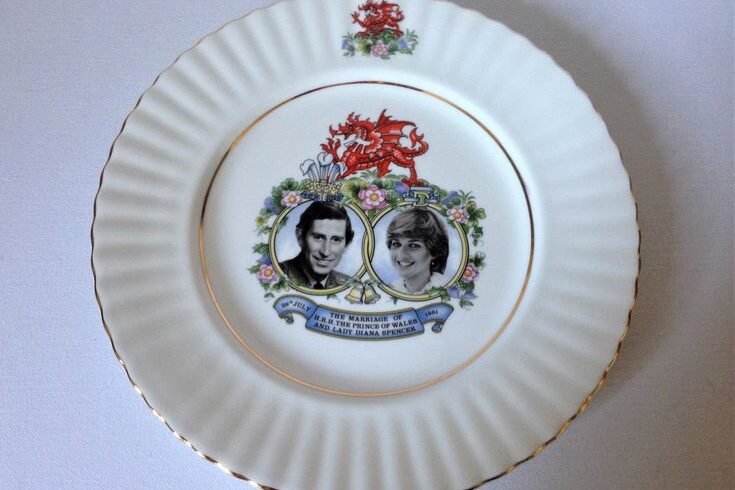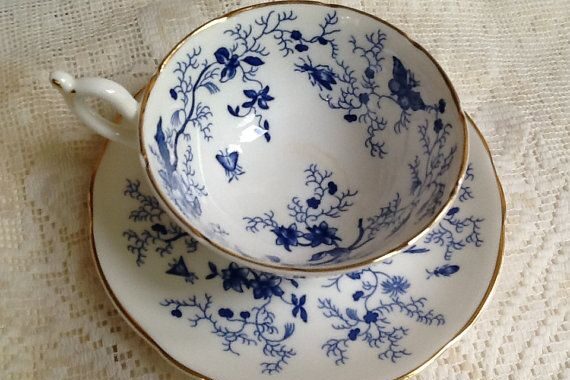1. Hummel Figurines

Every curio cabinet seemed to begin with a row of Hummel figurines, those soft pastel children frozen in moments of innocence. They were sweet, sentimental, and always positioned just so, as if they might topple with the slightest vibration. Their charm was in their detail, the tiny painted shoes and thoughtful expressions that hinted at a simpler time. They were often gifts, passed down with the same care as they were displayed. Visitors admired them, children were told to keep their distance, and their quiet presence made the cabinet feel complete, like a little gallery of treasured childhood memories.
2. Souvenir Plates

If there was a trip worth remembering, there was a souvenir plate to match, standing upright in a neat display. These plates weren’t for eating; they were porcelain postcards capturing sunsets, landmarks, and iconic views from family vacations. Some had shimmering gold trim, others bold colors that popped under the cabinet light. Each one told a story without words, quietly preserving the joy of a road trip or the awe of a new place. They were a way of saying, “We were here,” even decades later, offering a glimpse into the journeys that shaped family traditions and shared memories.
3. Crystal Animals

Crystal animals always stole the spotlight in the curio cabinet, their delicate shapes catching the light in every direction. Swans, dolphins, and horses seemed to shimmer even when the room was still. They looked fragile enough to break with a breath, which made them all the more mesmerizing. Sometimes they were part of a collection, other times just a single gleaming piece that stood alone. They were the kind of thing you didn’t touch but couldn’t stop staring at, small sculptures that sparkled with a beauty that existed simply to be admired and appreciated without ever losing their shine.
4. Teacups and Saucers

Every cabinet had its lineup of teacups and saucers, often mismatched but always pristine. They were rarely used, chosen instead for their floral patterns or delicate gold edges that seemed too nice for everyday life. Some had been gifts, others found in antique shops or passed down through generations. Their polished surfaces and careful arrangement made them more than tableware; they were works of art in miniature. Even without a drop of tea, they carried a kind of quiet elegance, a reminder that beauty could be found in small things meant to be admired rather than worn down by use.
5. Anniversary Clocks

Anniversary clocks sat under glass domes, their gentle ticking a steady reminder of the years they celebrated. Often given for milestones like a 25th or 50th wedding anniversary, they were meant to last, just like the relationships they honored. The brass pendulum turned slowly, hypnotically, and the clock’s design was more about sentiment than function. It didn’t matter if the time was perfectly accurate; what mattered was what it stood for. On special days it was polished until it gleamed, its place in the cabinet symbolic of love, endurance, and moments that were treasured far beyond their dates.
6. Wedding China

Wedding china was the prized possession of many a curio cabinet, often displayed proudly but never used. Each plate, cup, and saucer was part of a set chosen for beauty over practicality, usually white with delicate patterns or gold trim. It was the kind of thing that came out only for the most special of occasions, though often even those occasions passed without it leaving the cabinet. Its value was less about price and more about meaning, a physical reminder of a wedding day’s promise, preserved behind glass where it could be admired for years without a single scratch.
7. Precious Moments or Lladro Statues

Precious Moments and Lladro statues were tiny works of art that told gentle stories. Their soft colors, delicate features, and expressive poses captured themes of love, faith, and celebration. Each one felt personal, marking moments like a birth, graduation, or wedding. Their fragile nature made them seem all the more special, as if handling them too much might make the memories fade. They sat quietly in the cabinet, almost like little guardians of family milestones, their beauty meant not just for the owner but for anyone who took a moment to really see the emotion molded into each figure.
8. Collectible Bells

Collectible bells added a playful touch to the curio cabinet, even if they were rarely rung. Each one had a story, whether picked up during travels or gifted on birthdays and holidays. Some were porcelain with painted designs, others glass or brass with intricate details. Lined up together, they created a soft visual rhythm, their shapes and colors telling silent tales of where they came from. They weren’t valuable in the traditional sense, but their worth came from the memories they carried, small tokens of moments and places that were cherished long after the trip or occasion had passed.
9. Avon Bottles in Animal Shapes

Avon bottles shaped like animals, cars, or even boots were part fragrance, part keepsake. Once the perfume inside was gone, the bottle stayed as decoration, its quirky design too charming to throw away. They were fun, a little flashy, and always conversation starters. Some people had just one, others had whole collections lined up, their shapes ranging from elegant swans to playful bears. They didn’t have deep meaning, but they had personality, adding a lighthearted charm to the cabinet’s more formal pieces and proving that beauty could be found in even the most unexpected everyday objects.
10. Bronzed Baby Shoe

Bronzed baby shoes sitting in a curio cabinet always drew attention. It was a tiny monument to the earliest steps of a child’s life, preserved forever in shiny metal. Parents saw it as a way to freeze a fleeting moment, keeping a piece of their child’s beginning close at hand. It was usually displayed alone, sometimes with a small, engraved plate showing a name or date. The shoe didn’t need explanation to those who understood its meaning; it was love made tangible; a reminder of how quickly time passes from first steps to a grown-up’s steady stride.
11. Commemorative Coins or Medals

Commemorative coins and medals often sat in neat display cases, never spent or traded. They marked military service, historic events, or special anniversaries, their gleaming surfaces reflecting both pride and memory. Each one held a story, sometimes told, sometimes kept private, but always there for those who knew how to read it. They were a different kind of treasure, not about wealth but about honor. In the curio cabinet, they stood as proof of life’s milestones and achievements, small enough to fit in a palm yet powerful enough to hold years of meaning in a single design.
12. Decorative Thimbles

Decorative thimbles were tiny yet full of character, often painted with landmarks, flowers, or state names. They were collected during trips or received as gifts, and their small size made them perfect for displaying in neat rows. Despite their humble origins, they had a way of drawing curiosity, each one offering a miniature glimpse into a place or moment. They were quiet little souvenirs, carrying the same nostalgia as larger keepsakes but without taking up much space. In a way, they summed up the whole cabinet’s purpose, holding memories in a form that could be admired for a lifetime.
This story 12 Things That Lived Inside Every Boomer’s Curio Cabinet was first published on Daily FETCH


